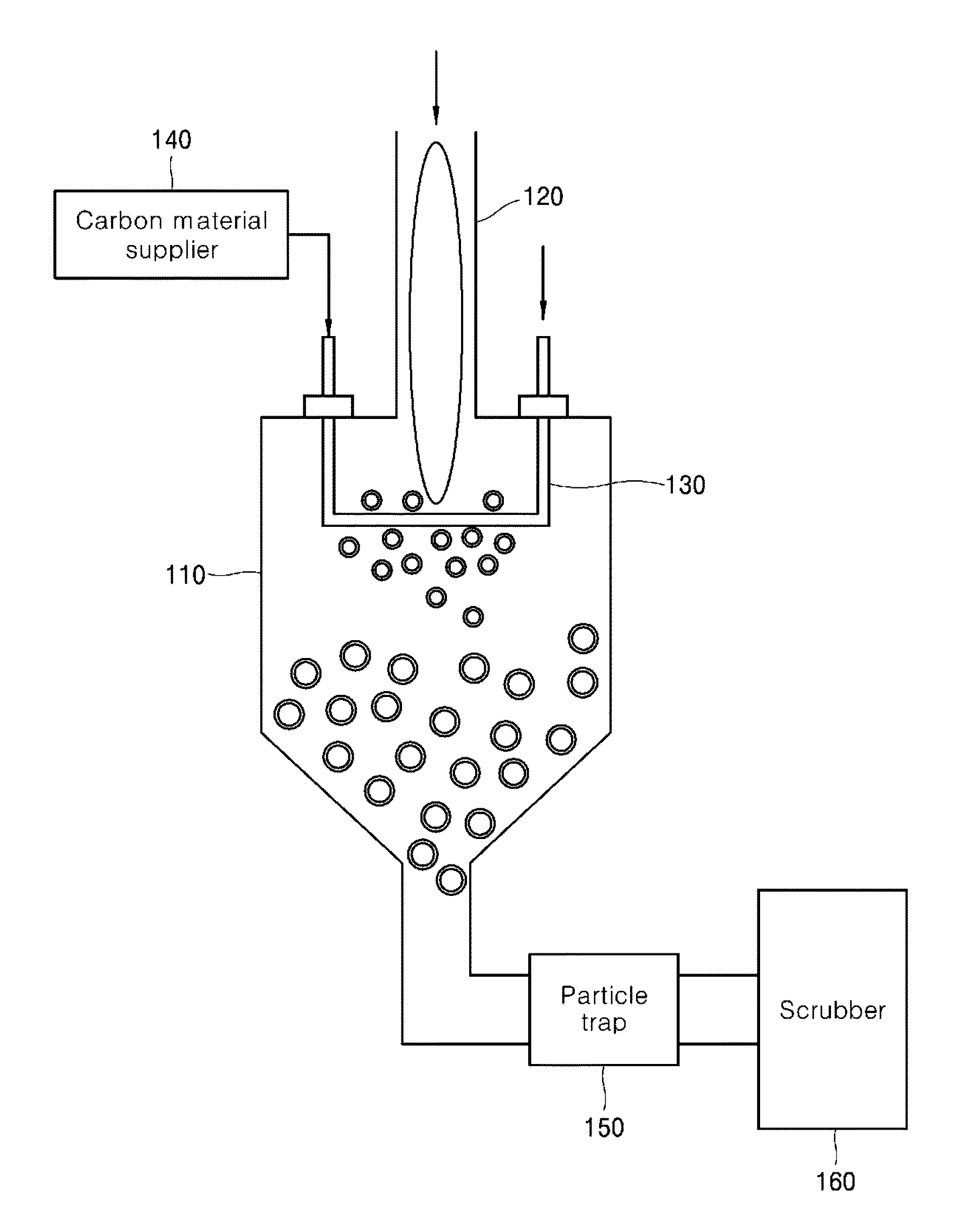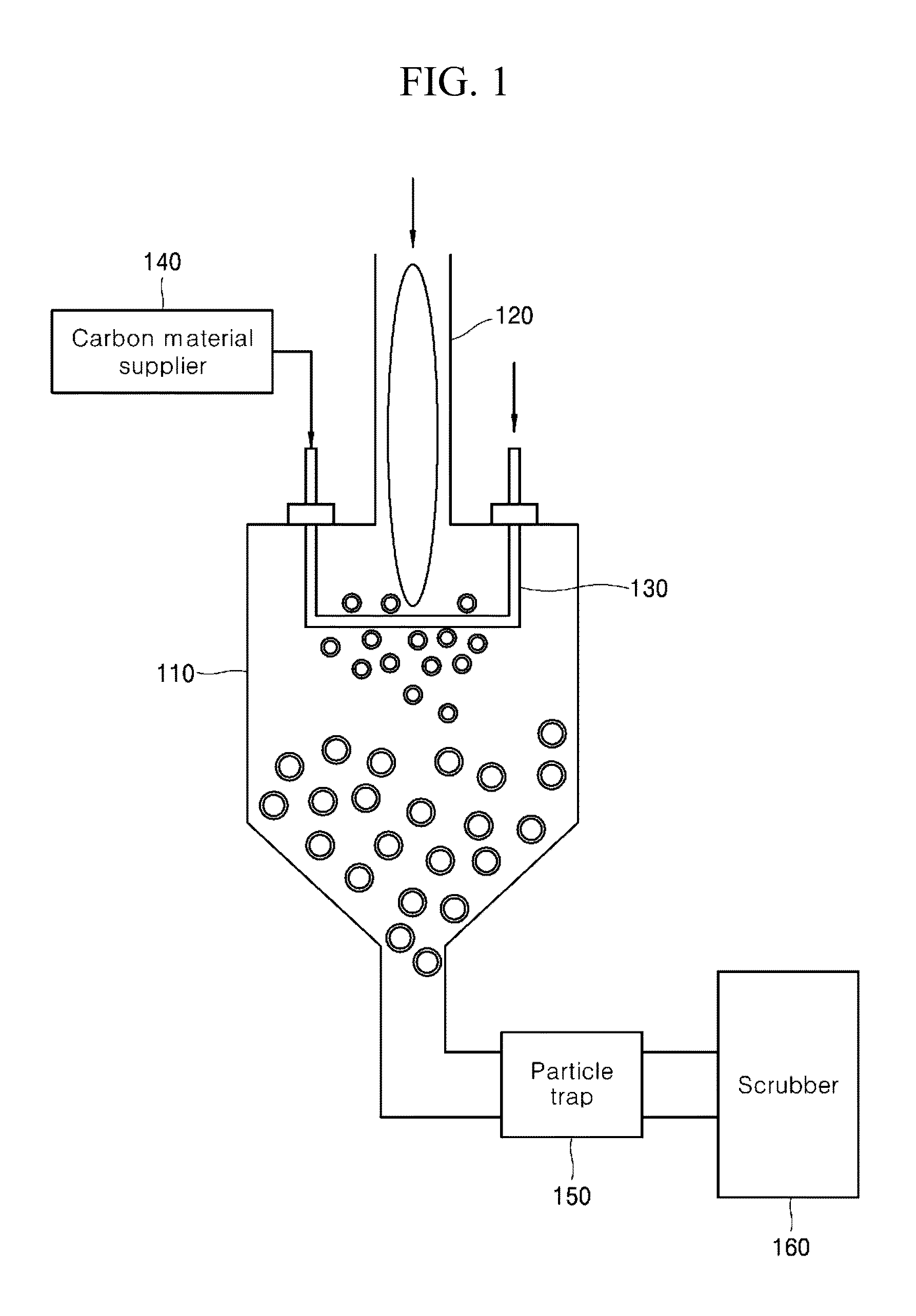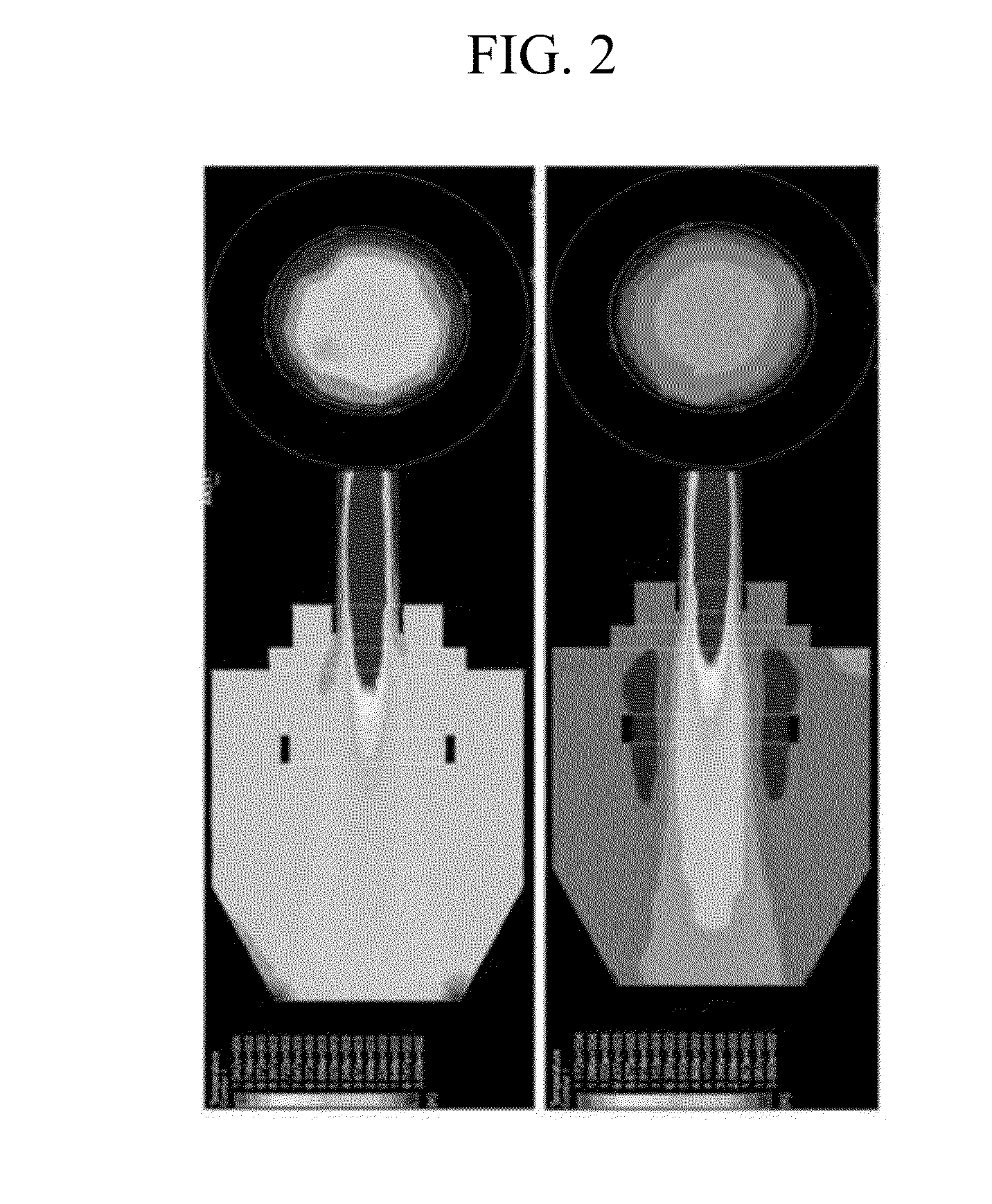APPARATUS FOR MANUFACTURING Si-BASED NANO-PARTICLES USING PLASMA
- Summary
- Abstract
- Description
- Claims
- Application Information
AI Technical Summary
Benefits of technology
Problems solved by technology
Method used
Image
Examples
first embodiment
[0055]FIG. 1 is a conceptual view showing an apparatus for manufacturing silicon-based nanoparticles according to the present disclosure, more specifically, shows an apparatus capable of producing Si—C composite nanoparticles.
[0056]As depicted, an apparatus for manufacturing Si—C composite according to the present disclosure includes a reaction chamber 110 for providing a reaction space, a plasma torch 120 for generating plasma to decompose silicon precursors and produce Si particles, a cooling part 130 for cooling the Si particles supplied thereto, provided within the reaction chamber 110, and a carbon material supplying part 140 for supplying carbonaceous materials into the reaction chamber 110.
[0057]The plasma torch 120 is provided on an upper portion of the reaction chamber 110, and the cooling part 130 is provided on a lower portion of the plasma torch 120.
[0058]Carbon material supplying part 140 is connected to the cooling part 130, and therefore carbonaceous materials can be ...
second embodiment
[0089]FIG. 9 is a conceptual diagram showing an apparatus for manufacturing silicon-based nanoparticles according to the present disclosure, and, more specifically, shows an apparatus capable of producing SiOx nanoparticles.
[0090]The apparatus of manufacturing silicon-based nanoparticles depicted in FIG. 9 is similar to that depicted in FIG. 1 as a whole. However, the apparatus depicted in FIG. 9 is further provided with a swirl gas inlet 124.
[0091]As depicted, the apparatus for manufacturing SiOx nanoparticles according to an embodiment of the present disclosure includes a reaction chamber 110 for providing a reaction space, a microwave plasma torch 120 for generating plasma using a microwave to decompose silicon precursors and produce Si particles, and a cooling part 130 for cooling SiOx nanoparticles so formed, provided within the reaction chamber 110.
[0092]The plasma torch 120 is provided on an upper portion of the reaction chamber 110, comprising a precursor gas inlet 122 and a...
PUM
 Login to View More
Login to View More Abstract
Description
Claims
Application Information
 Login to View More
Login to View More - R&D
- Intellectual Property
- Life Sciences
- Materials
- Tech Scout
- Unparalleled Data Quality
- Higher Quality Content
- 60% Fewer Hallucinations
Browse by: Latest US Patents, China's latest patents, Technical Efficacy Thesaurus, Application Domain, Technology Topic, Popular Technical Reports.
© 2025 PatSnap. All rights reserved.Legal|Privacy policy|Modern Slavery Act Transparency Statement|Sitemap|About US| Contact US: help@patsnap.com



